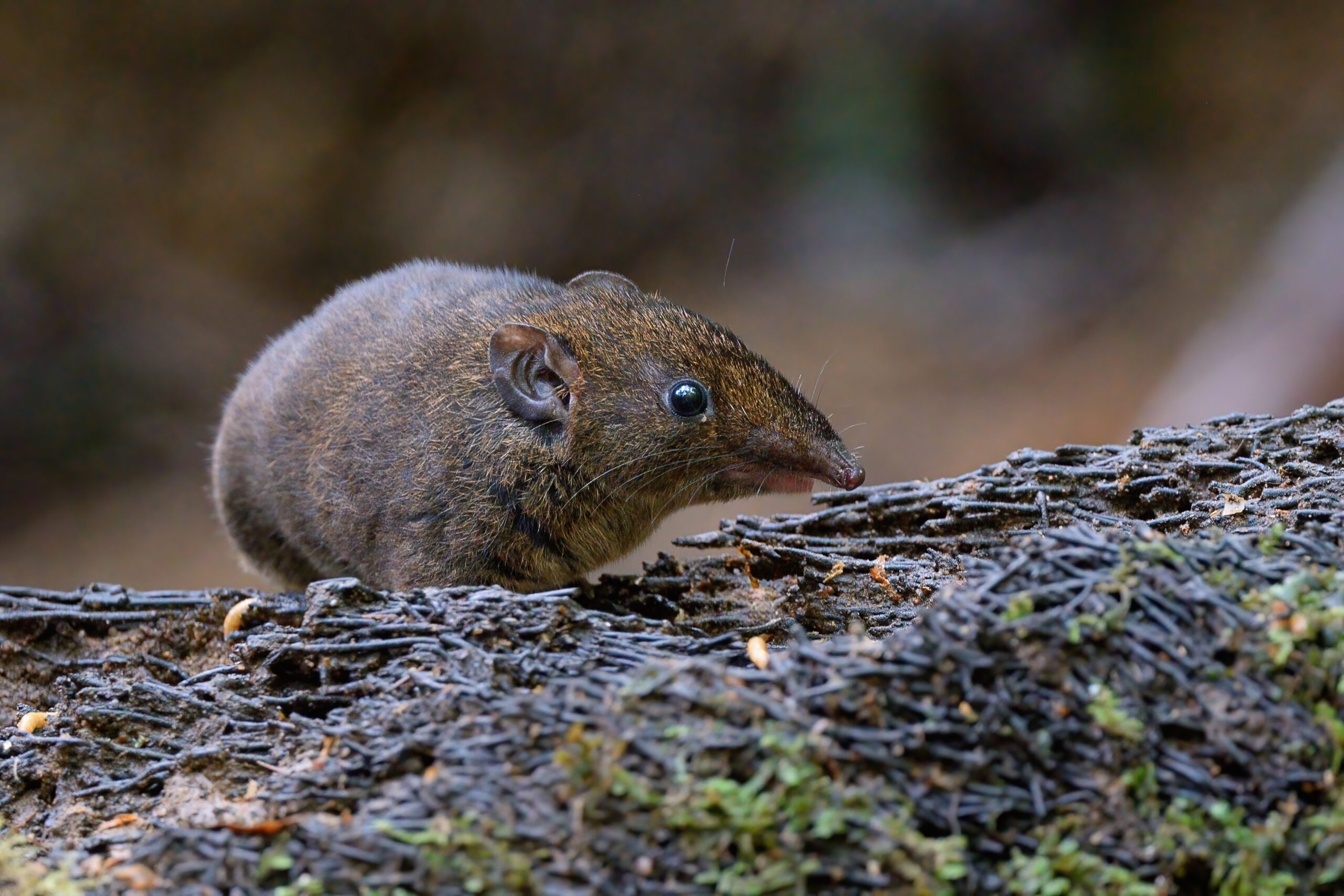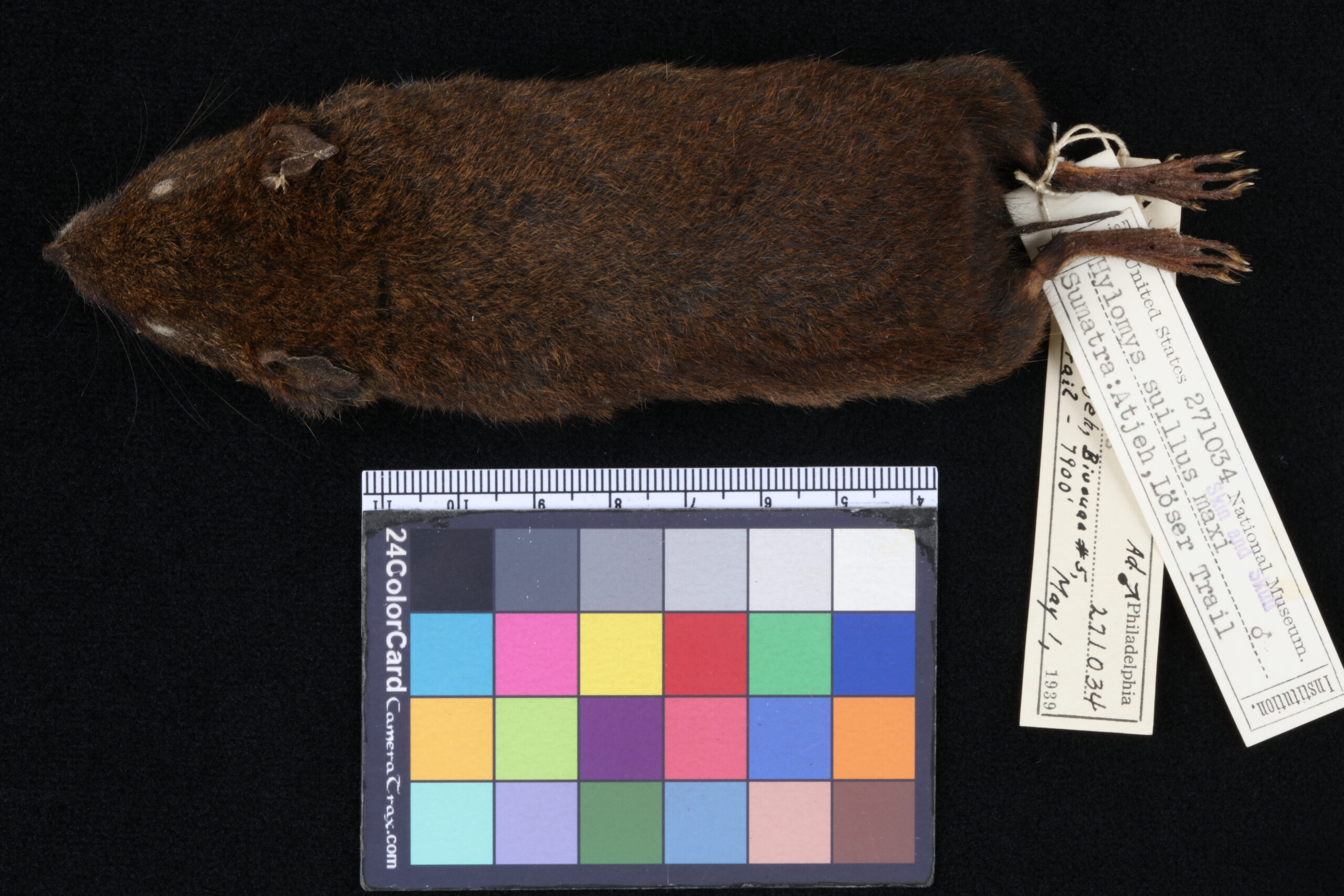Five new soft-furred hedgehog species discovered in Southeast Asia!
In a great feat of research, five new species of soft-furred hedgehogs from Southeast Asia have recently been identified!

Hylomys dorsalis seen in the wild on Mount Murud, Sarawak, Borneo, Malaysia. Photo credits: Quentin Martinez
The recently published paper was led by Arlo Hinckley, post-doctoral fellow at the Smithsonian’s National Museum of Natural History, and co-authored by Marcus Chua, curator of mammals at LKCNHM, and Melissa Hawkins, curator of mammals at the Smithsonian’s National Museum of Natural History, among others. The study used DNA analyses and physical characteristics to describe two entirely new species of soft-furred hedgehogs, Hylomys vorax and H. macarong, and elevate three subspecies to the level of species. The two new species are endemic to the endangered Leuser ecosystem, a tropical rainforest in North Sumatra, and Southern Vietnam, respectively.
“This study increases the number of species of living Hylomysfrom two to seven. Many of these species are in areas experiencing deforestation and may need conservation attention”, said Chua.

Hylomys maxi seen in the wild on Fraser’s Hill, Pahang, Malaysia. Photo credit: David Awcock
Two museum specimens from the natural history collections of the Smithsonian and the Academy of Natural Sciences of Drexel University in Philadelphia had been vital to describing these two new species. Specimens from the Zoological Reference Collection of LKCNHM were also examined as part of this research.

Specimen from the Smithsonian’s National Museum of Natural History that scientists studied to describe the new soft-furred hedgehog species Hylomys macarong. Photo credit: Katie Sayers, Smithsonian.
“It might be surprising for people to hear that there are still undiscovered mammals out there,” said Hawkins. “But there is a lot we don’t know—especially the smaller nocturnal animals that can be difficult to tell apart from one another.”
The study clearly shows the importance of museum collections and modern techniques such as DNA analysis, for even in well-studied animal groups like mammals, there are still discoveries waiting to be made.
Read the new paper here: https://academic.oup.com/zoolinnean/advance-article/doi/10.1093/zoolinnean/zlad177/7468198

